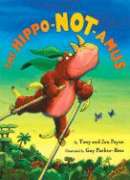
A young hippopotamus who is bored with his life sets out to discover “just the right kind of animal to be.”

A young hippopotamus who is bored with his life sets out to discover “just the right kind of animal to be.”
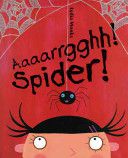
A clever spider is lonely and longs to become a family pet.
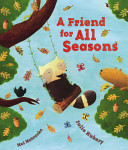
Robbie the Raccoon and his friends love Father Oak and worry that he is sick when his leaves begin to turn color and fall off, but Robbie’s mother explains what the change means and helps him plant some acorns as a sign of hope for spring.
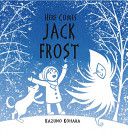
One cold morning a lonely boy wishes for something to do. His animal friends are hibernating, and he has nobody to play with-even all the birds have flown south. When he meets Jack Frost, the last thing he expects is to make a new friend… or to discover how enchanting winter can be!
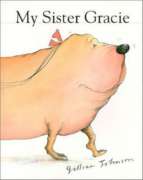
Fabio the dog longs for the companionship of a feisty brother, so when the family brings home an older, sleepier sister, he is not very happy.
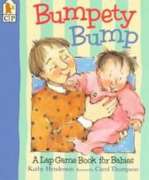
As she’s passed from one family member to another, Baby enjoys a rollicking ride.
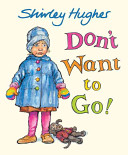
A resistant Lily discovers that new experiences don’t need to be scary in this engaging, deftly told story certain to resonate with young children. One morning, Lily’s mom wakes up with a sore throat and achy head and needs to stay in bed. But Lily’s dad needs to go to work. Who will look after Lily? When Dad arranges for her to spend the day at Melanie’s house, Lily is none too happy. “Don’t want to go!” she says. Even though Melanie has a friendly dog named Ringo and a funny baby named Sam, Lily is shy and wants to sit under the table with her toy Bobbo. But maybe a chance to make silly collages, or feed Sam lunch, or hold Ringo’s leash might make her feel braver–and maybe she’ll start having so much fun she won’t want to leave at the end of the day! With illustrations that keenly convey emotion through the subtlest gesture, Shirley Hughes mines a familiar situation for its most genuine moments and creates a truly reassuring story for young children.

Two children find goodwill and acceptance in unexpected places even in the hardest of times in a moving tale from a master picturebook creator. In 1930s Liverpool, where streetcars clang on iron tracks, young Bronwen and Dylan live with their widowed Mam. Every day, in the wee hours of morning, Mam leaves the two alone as she gathers other people’s laundry to boil in a big metal copper at home. At night, if she’s not too tired, Mam tells fanciful tales of dragons and ghosties, and on Sunday, she cautions the children about the O’Rileys next door, who go to a church that is not for their kind. But on Christmas Eve, when Mam must go out, Bronwen and Dylan hear a ghostly plonk! plonk! plonk! from the washroom that sends them running straight into the arms of Mrs. O’Riley. Not only do they find that the house next door harbors nothing to fear, but it may hold a blessing for Mam, too. With evocative drawings full of compelling detail, Shirley Hughes tells a timeless, genuine tale of community and human kindness.
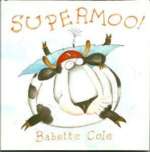
Operating out of their Cowcave headquarters, Supermoo, a superheroine Holstein, and her trusty sidekick, Calf Crypton, battle the evil forces of pollution that are out to destroy the world.
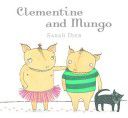
Clementine gives creative answers to the many questions that her younger brother Mungo asks.